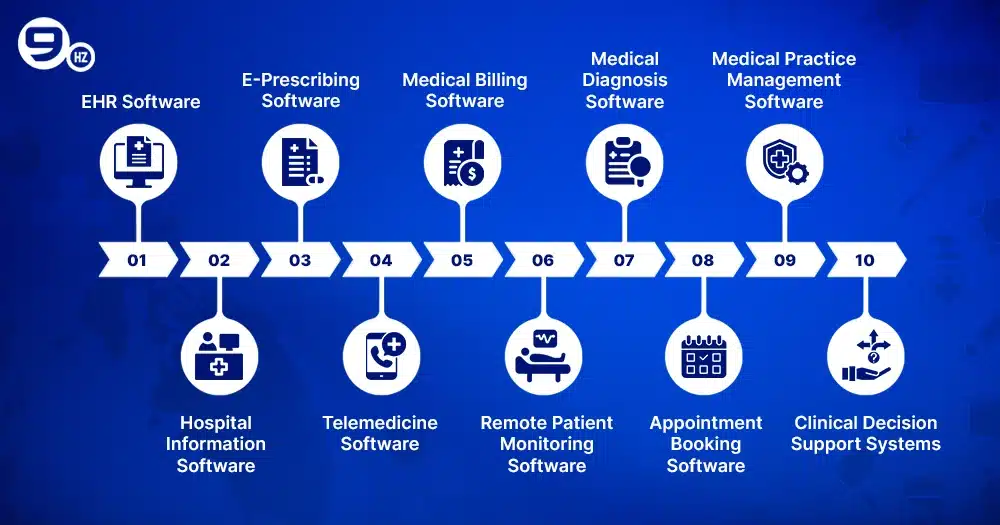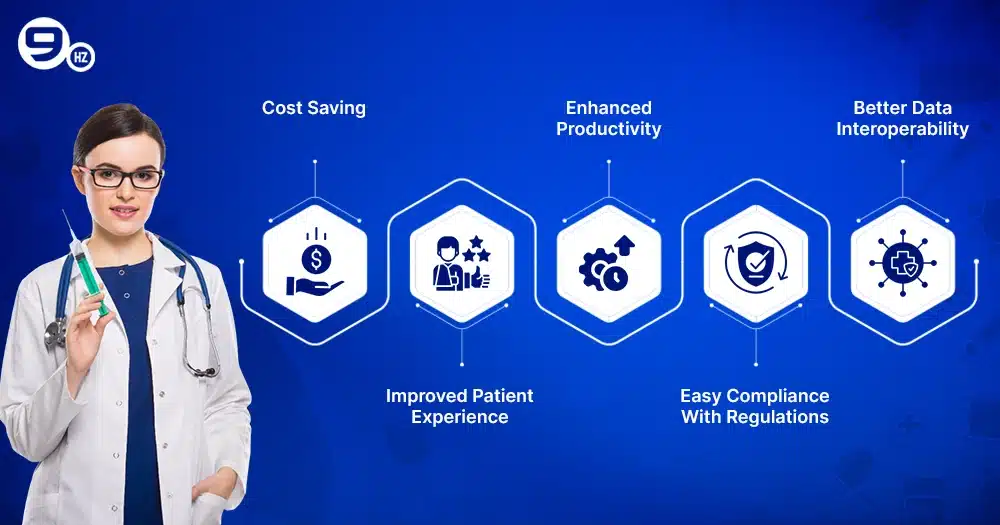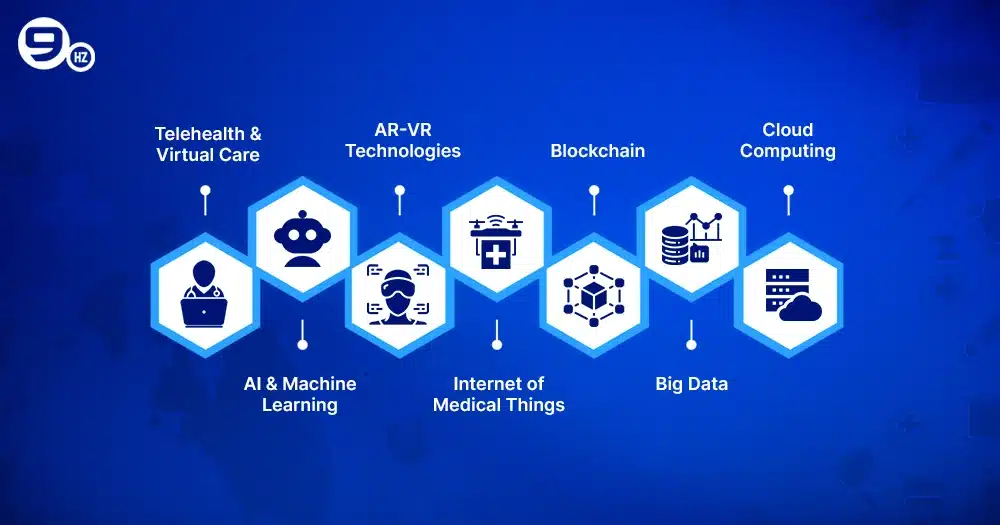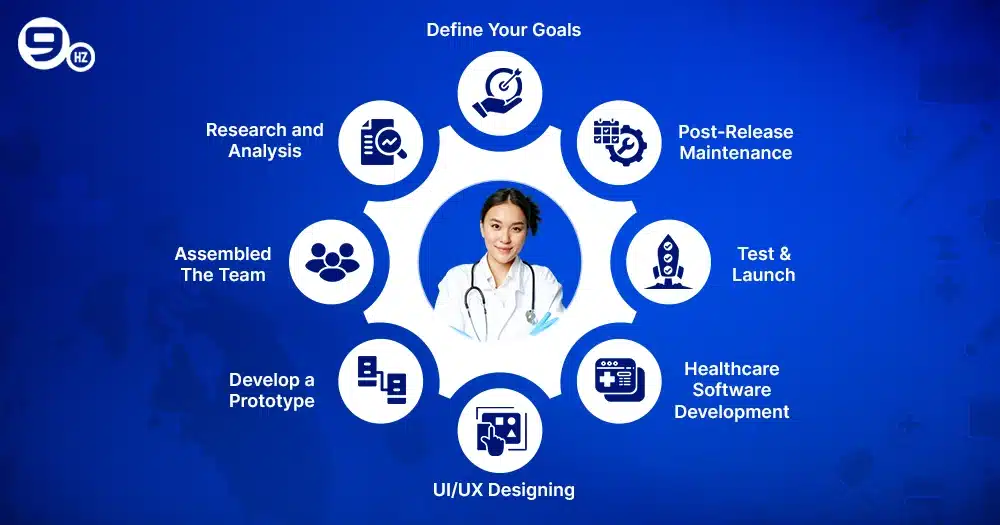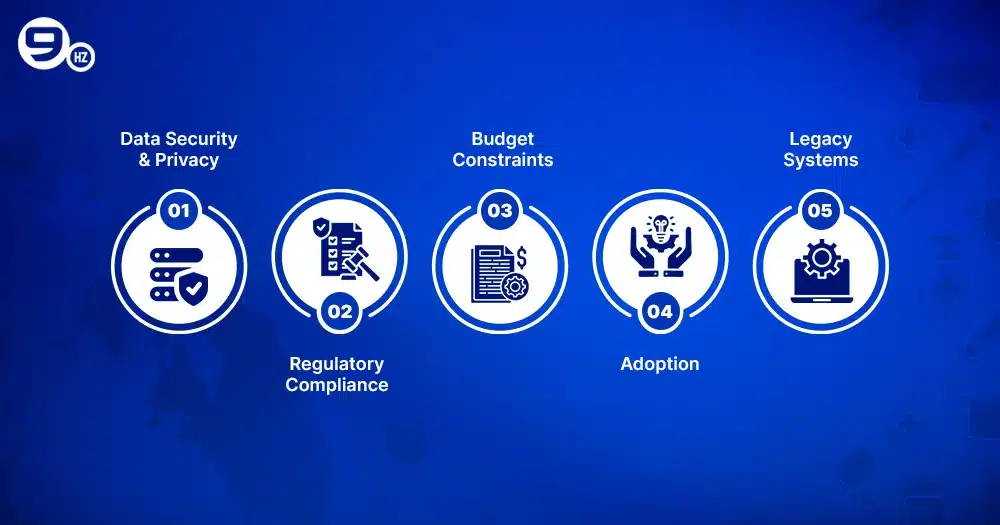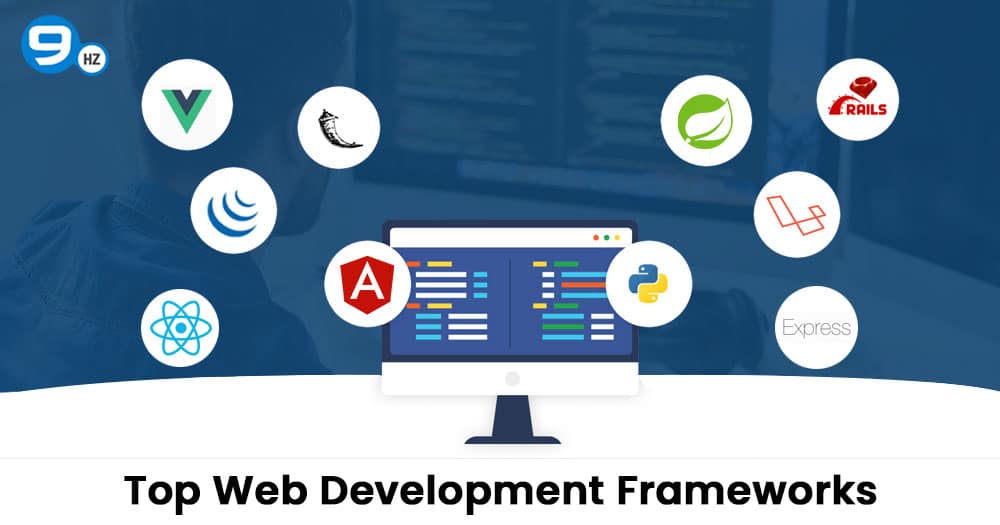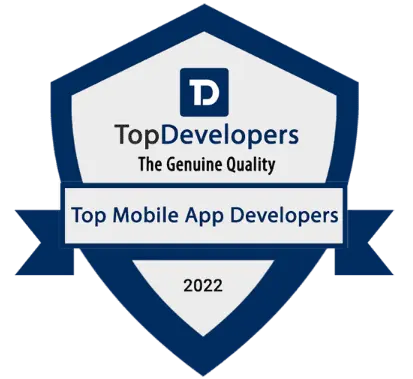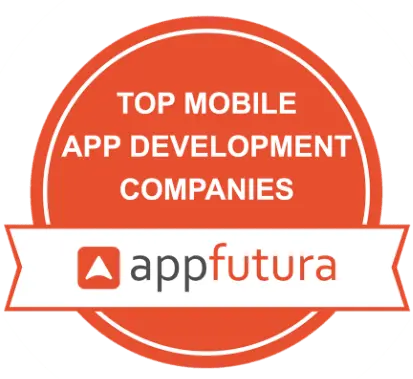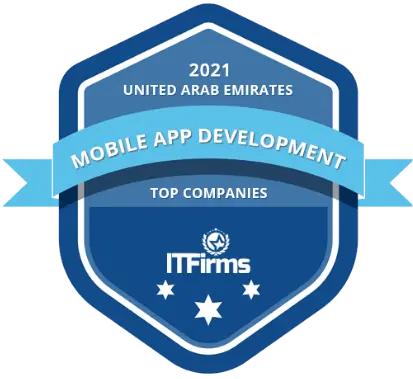What if a digital stethoscope could predict heart issues sooner? Or could AI diagnose diseases faster than ever before? This isn’t science fiction; it’s reality.
Whether a mobile app or web platform, healthcare software development transforms how care is delivered, accessed, and managed.
From pathology labs to surgical simulations, from appointment booking to remote patient monitoring—healthcare software is at the center of innovation.
For example- The Amsterdam-based startup Lapsi Health has introduced a gadget called Keikku, which works as a digital stethoscope. The app shows its results. It is just an example. You can also consider software-controlled 3D organ printing machines or diagnosing patients using IoT devices and AI-powered software.
There are numerous examples of software development in the medical field, improving patient care, saving time for professionals, and increasing the reach of better services.
Due to the increasing demand for modern healthcare solutions, the digital health market is projected to reach US$258.25bn by 2029 [Statista]. Software development still has great potential to improve healthcare services.
This guide walks you through all the crucial aspects of building innovative and secure healthcare software. From understanding the basics and compliance requirements to exploring key features and development steps, you’ll find everything you need here. As a trusted healthcare software development company, we provide insights and best practices to help you create user-friendly, scalable, and regulation-compliant solutions that enhance patient care.
Let’s start with the blog!
What is Healthcare Software Development?
Healthcare software development is the process of creating a platform, system, or even an application that helps healthcare professionals improve the efficiency of services and patient care. On the other hand, it allows patients or individuals to easily access diagnosis, symptom analysis, and treatment.
Overall, healthcare software applications streamline communication between doctors and patients. Hospitals, clinics, and medical research labs can leverage them for better administration of patients’ data and records.
Due to the evolution of technology, you can customize it with the help of healthcare software developers and take it to the advanced level by integrating latest technologies such as AI, Blockchain, Machine Learning, IoT, and others.
Main Types of Healthcare Software Development
The healthcare ecosystem is evolving fast, and healthcare software solutions are a major contributor. Surprisingly, these solutions come in a variety designed to meet the specific needs of patients, doctors, healthcare services providers, and medical institutions.
Let’s look at the key types of healthcare software development solutions.
1. EHR Software
EHR software is also known as Electronic Health Record software. It is a specially designed CRM for the medical industry. It allows health care providers to maintain patient health records, medical histories, lab results, diagnosis records, and more. ERP software can easily integrate with EHR software, enhancing its capabilities.
There are two types of EHR: EPR(electronic patient record software to store patients’ information) and EMR(electronic medical record software that records information like medication dosage, types, etc.).
Examples: Athenahealth, Tebra
2. Hospital Information Software
Handling management, administration, and paperwork is a significant challenge for hospitals. Here comes hospital information software (HIS). The HIS reduces the overburden and stress of hospital administration, helping in seamlessly running administrative operations. You can also call it Hospital Management Software(HMS). HIS/HMS aims to improve overall productivity, make hospital management paperless, and improve service quality.
You can easily integrate HIS with EHR and other healthcare software to establish centralized management. Internally, it functions for multiple tasks, from patient registration to staff management.
Examples: Oracle Health, Epic Systems,
3. E-Prescribing Software
Electronic prescribing or e-prescribing software facilitates healthcare providers’ or doctors’ direct sending of paperless prescriptions to pharmacies, increasing patient convenience. Doctors can create digitally signed prescriptions and share them instantly with the pharmacy using this software. Overall, it saves patients time and improves the efficiency of healthcare service delivery.
Examples: Allscripts, DrFirst
4. Telemedicine Software
Telehealth software development is on the rise (the market forecast for 2030 is $455.27 billion) in the USA and globally.It bridges the gap between patients and healthcare providers. Using a web browser or a mobile app, patients and doctors can communicate with each other through video calls. As its additional functionality, patients can pay fees online and receive a prescription through chat or email.
Examples: Capterra, Teladoc
5. Medical Billing Software
Medical billing and revenue management are complex processes that require accuracy. Medical billing software solves these challenges and simplifies the process. The billing department can easily track expenses, invoices, insurance claims, and co-pays and manage financial data in a streamlined way. When developing medical billing software, make sure it suits your workflow and easily integrates with EHR.
Examples: EZClaim,AdvancedMD
6. Remote Patient Monitoring Software
As its name implies, RPM software collects data through connected devices such as blood-pressure cuffs,glucose monitors, wearable ECG monitors, and others. Doctors or clinicians can keep a constant eye on patients, especially if they have chronic diseases. RPM software also makes home care easy and improves the quality of in-home healthcare services.
Examples: Philips Remote Patient Monitoring, Athelas
7. Medical Diagnosis Software
Diagnosis is one of the most important activities in healthcare, and medical diagnosis software simplifies it. Most of these software leverages AI to diagnose diseases by analyzing collected data from patients. Individuals can also utilize these apps to see if they need to go to the doctor because of their symptoms.
Examples: IBM Watson for Oncology, Ada Health
8. Appointment Booking Software
These are traditional healthcare software that hospitals, clinics, and healthcare facilities use to manage appointments. Doctors receive reminders for their upcoming appointments through mail and messages. Patients can also use this software using a dedicated patient panel, where they can book appointments conveniently.
Examples: Acuity Scheduling, DocPulse
9. Medical Practice Management Software
Medical practice management systems automate important tasks, including appointment scheduling, billing, and patient communication. Designed to streamline clinic processes, they securely maintain critical patient and administrative data, combine several systems, and improve accuracy. Through maximum efficiency, they let medical professionals concentrate on delivering high-quality treatment.
Examples: NueMD, Carepatron
10. Clinical Decision Support Systems
Clinical Decision Support Systems help doctors care for patients by giving them advice based on proof. These tools examine information like medical history and test results to ensure accuracy in decisions. Through timely insights, they improve patient outcomes, boost speed, and reduce errors.
Examples: Prescriber360
The Real Benefits of Custom Healthcare Software
The increasing demand for better healthcare services puts pressure on healthcare providers to offer something unique. The problem starts when healthcare teams use traditional systems or pre-built software solutions that don’t suit specific requirements. This is the universal truth—one solution can’t fit all.
Custom healthcare software development is the best solution to address these challenges. Here are the real benefits that you’ll have with bespoke healthcare solutions:
1. Cost Saving
Most pre-built or off-the-shelf solutions look easier to find, but their dark side is license fees, per-user charges, abrupt feature upgrades, and integration costs. Conversely, developing custom healthcare software is a one-time investment.
You own the software and its rights. You can upgrade the features, integrate them with your legacy systems, mold them to fulfill your growing team’s requirements, and many more. There is no additional cost than you pay while using pre-built solutions.
2. Improved Patient Experience
The ultimate goal of healthcare software product development is to improve patient care and the quality of services. Custom healthcare solutions put patients at the core, and you have complete control over what you can do to create personalized patient care experiences. On the other hand, off-the-shelf healthcare platforms offer a fixed workflow and predetermined features without any guarantee that they will suit your requirements.
3. Enhanced Productivity
Numerous time-consuming tasks can slow down your healthcare team’s performance and distract them from their primary task. For example, using multiple tools simultaneously to handle a patient or handling the same data at several locations. Using custom patient care software, you can automate the tasks, instant-switch to the tools, and maintain accuracy.
4. Easy Compliance With Regulations
In healthcare, compliance with regulations is a must, and you can’t just ignore these. Regulatory compliances like HIPAA, GDPR, and HL7 ensure standards, security, privacy, ethical healthcare practices, and more. Using custom software, you can make it easy to comply with regulations.
5. Better Data Interoperability
“Data is the new oil”- Clive Humby
Yes, that’s true not only for the other industries but also for healthcare. From maintaining patients’ records to managing lab data, better data interoperability is needed. Systems like EHR, appointment booking,RPM, insurance, and others generate tons of data every day.
Keeping that data in symmetry is a challenge; a simple mistake can create chaos. With custom medical software, you can have better data interoperability and keep the data centralized so that it can be pulled easily whenever required.
Top Trends Driving Healthcare Software Development
As time progresses, healthcare practices will be different and more advanced. The focus is now on personalization and effective patient care. The latest technology and trends are making this transformation possible. Some of the key trends include:
1. Telehealth & Virtual Care
A poll found that 74% of millennials favor telemedicine, and 96% of telepsychiatry patients are satisfied. Telehealth began during the epidemic and is now a widespread healthcare practice. Telehealth software, virtual appointments, remote patient care, and monitoring boost healthcare practitioners’ capabilities. Modern telehealth solutions include EHR, billing, and appointment scheduling.
2. AI & Machine Learning
Don’t be surprised if someone says that most healthcare firms or organizations are now using AI and machine learning. This can be anything from lab data analysis to diagnose disease, creating data patterns, or in the form of an AI chatbot. AI is now helping in scheduling, medical scanning and imagery, reporting, treatment response, and more. Due to its rising use cases, AI in healthcare is projected to reach $173.55 billion by 2029.
3. AR-VR Technologies
Everything is possible with AR-VR, from training medical professionals to simulating complex surgeries. Now, Augmented and Virtual Reality are helping professionals refine their skills and knowledge to provide better medical attention and follow the latest healthcare practices. The global AR-VR market in healthcare is anticipated to grow at a CAGR of 39.16% by 2030.
4. Internet of Medical Things
The Internet of Medical Things (IoMT) has been rapidly reshaping the healthcare industry since the pandemic. Connecting devices for remote monitoring and more, IoMT reduces associated healthcare costs and boosts the efficiency of professionals. With numerous benefits, healthcare providers are using IoMT to optimize patient care.
5. Blockchain
Data security and compliance are both necessary for healthcare software development, and the reason is simple: to protect sensitive data from theft and threats. Blockchain is the best option for it. Its decentralized nature prevents any harm to the sensitive data and structure. That’s why the adoption of Blockchain in healthcare is rising to have benefits like improved security and high transparency.
6. Big Data
Big data transforms healthcare data mining and analysis. Advanced data analytics tools can aid diagnostic and therapy studies using patient information and medical imaging. This technology also predicts risk variables and patient prognosis, helping monitor population health and establish disease prevention methods.
7. Cloud Computing
Cloud computing is one of the best trends to follow in medical software development. Due to its benefits, hospitals, clinic chains, and healthcare providers are widely adopting cloud transformation. It is cost-saving and reduces dependencies on hardware and infra resources.
Step-by-Step Process to Build Healthcare Software
The process of software development for healthcare is quite similar to developing other types of software. But two things are crucial here: one is hiring experienced healthcare software developers and having knowledge of compliances such as HIPAA. Developing medical software requires in-depth knowledge of industry and regulations including expertise to make it compliance-ready.
The steps follow:
1. Define Your Goals
There are numerous types of healthcare software, so you must choose what suits your needs, to whom you will serve, what features you want to implement, and others. Additionally, you should define how much of your budget you can spend. Once you have a clear view of goals, document it.
2. Research and Analysis
Research the market and your competitors before you start building healthcare software. This will help you determine the feasibility of your idea and stay competitive.
3. Assembled The Team
One of the most crucial steps is assembling a team of experienced developers, designers, and quality analysts. All will help you create healthcare software that aligns with your needs. While hiring the experts, explore their work folio, analyze their expertise and skills, inquire about payment terms, and go through the testimonials and feedback. Once all set, hire experts from a trusted healthcare software development company.
4. Develop a Prototype
It all starts with wireframing and ends with a final prototype. The experts will help you, from sketching the screen to creating a prototype depicting how the final version will look alike.
5. UI/UX Designing
When creating UI/UX, keep all your target audience in mind, i.e., from patients to healthcare providers. Make future aspects a priority to create a scalable UI/UX. Later, it will be easy to expand your software with growing needs.
6. Healthcare Software Development
This step involves actual coding to create the front and backend, including other essential tasks such as database creation, server setup, feature implementation, and integrations. Rather than launching a full version, launching an MVP with minimal but essential features is the most cost-effective idea.
7. Test & Launch
With the help of experienced quality analysts, check your software for vulnerabilities, bugs, and security issues. Make sure it also meets all compliance requirements. Once done, launch your software.
8. Post-Release Maintenance
Periodic maintenance, feature upgrades, and bug fixing will keep your healthcare software seamless. This will help you stay relevant, comply with regulations, and ensure sustainability.
Healthcare Software Development Challenges
Developing healthcare software is advantageous, but certain challenges are also associated with it, which need to be addressed to achieve success and drive the best results.
1. Data Security & Privacy
Data security and privacy are a major concern as the intensity of cyberattacks is increasing, and medical software handles sensitive data. The software must have a robust security mechanism and comply with patient privacy and security regulations.
2. Regulatory Compliance
Complying with regulations is important to avoid legal troubles, and the healthcare industry is strictly regulated. The software must be compliant with regulations such as HIPAA, GDPR, HL7, and local regulations.
3. Budget Constraints
Budgeting can also be a challenge for healthcare organizations, especially when they need an advanced system. The only solution is strategic planning to maximize the available budget.
4. Adoption
Adopting the latest solutions can be challenging if their features are too complex or unfriendly. The best solution is to create an intuitive user interface, and appropriate training must be provided for professionals.
5. Legacy Systems
Legacy systems can create issues when integrating the latest tech-powered solutions. So, the only solution to this challenge is modernizing legacy healthcare software for better data interoperability, healthcare compliance readiness, and streamlined healthcare services.
What Do Healthcare Software Development Companies Do?
Healthcare software companies build software for the medical field. These include systems for patient records (like EHR), platforms for online doctor visits, and mobile apps for telemedicine or remote patient monitoring. They also create software such as hospital management, medical billing, clinical decision support systems, and more, helping healthcare organizations deliver effective service.
Cost of Software Development in the Healthcare Industry
The average cost to develop healthcare software ranges from $50,000 to $250,000+. However, it depends on an idea’s complexity, features, development team size, integrations, development approach, design, and quality analysis. Another major cost-affecting factor is app type, for example, EHR/EMR, RPM, E-Prescribing, and Hospital Management Software.
The cost works as if you need a simple appointment booking system. It may cost you $20,000-$30,000, or if you need an AI-powered remote patient monitoring system with EHR/EMR, telemedicine, and other features, the ballpark estimate may be $250,000 or more. The other examples are EHR Software($30,000-$120,000), Custom Healthcare Software development($50,000-$150,000) etc.
How to Choose the Right Healthcare Software Development Partner?
For successful healthcare software development, choosing the right technology partner is crucial. But finding a partner is a great struggle for healthcare organizations, and most of them are stuck at- “How and where to find?”
Following the mentioned steps, you can simplify your quest to find a perfect healthcare software development services provider.
Let’s examine the steps!
Research and Shortlist
Research on the internet using keywords and make a shortlist of healthcare software development companies.
Evaluate Expertise
Once the shortlist is created, your next step is carefully evaluating their expertise and experience in developing healthcare software. Explore their portfolio to see if they have worked on a similar idea, and also evaluate their integration expertise.
Enquire Development Process
Enquire about what type of development process that particular company follows, such as Agile Methodology, what its project management approach is, and how it communicates with its clients. Additionally, enquire about its compliance knowledge and how it implements data security and privacy.
Technical Skills
Ensure the developers have appropriate technical skills to use the latest technologies to build cutting-edge medical software.
Healthcare Software Development Cost
Enquire what cost they charge to develop healthcare software similar to your idea, whether they have expertise in developing cost-effective solutions, and whether they offer flexible hiring modes.
Post-launch Support
Maintenance and support are crucial for the seamless execution of healthcare software for long-rung patients, so please also enquire if they provide post-release maintenance and support services.
Conclusion
The healthcare software development market is booming, and credit goes to the increasing demand for innovative solutions and the evolution of technologies like AI, Machine Learning, IoMT, and others. The latest tech-powered solutions help healthcare organizations attain accuracy, efficiency, and productivity while providing patient care services. On the other hand, they help individuals get better medical assistance at their own convenience. Better outcomes are expected in the near future.
If you are also looking to create something unique for your healthcare business, The NineHertz, a premier healthcare software development company, is your go-to partner. We have extensive expertise in developing the latest cost-effective healthcare software solutions. If you have an idea, we can turn it into fully functional healthcare software. Let’s connect!

